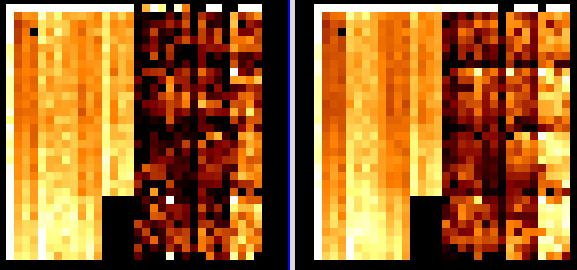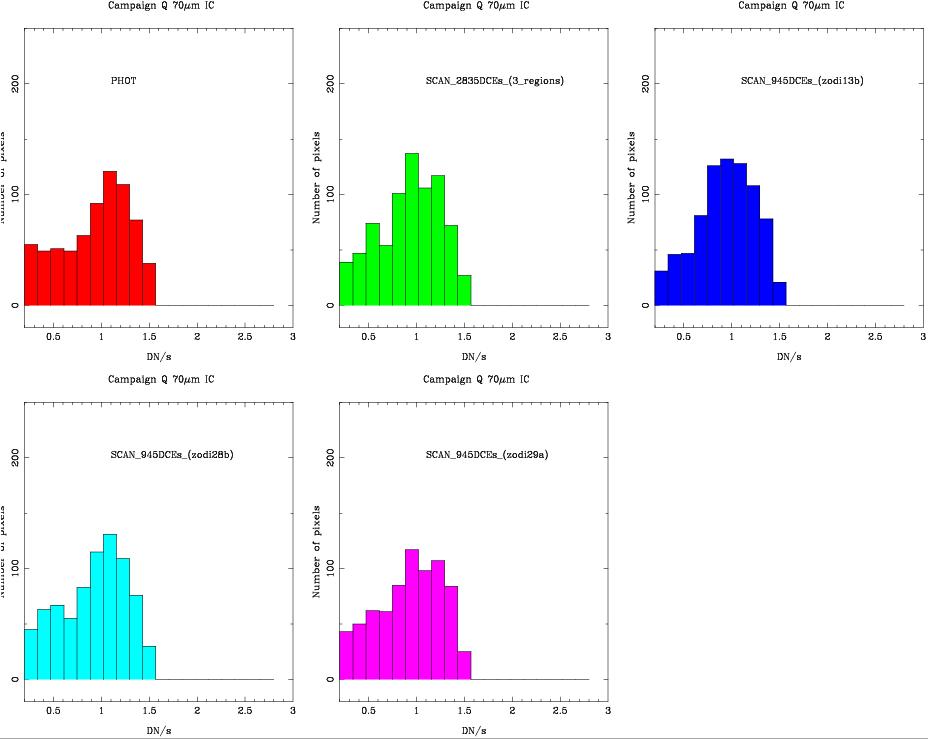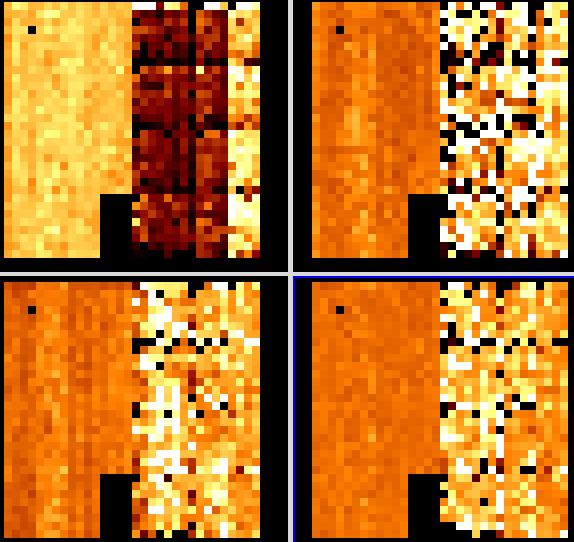
Figure1. Comparison of 70micron Illumination Corrections obtained in PHOTOMETRY (left) and SCAN modes (right). Both are displayed from z1=0. to z2=2.
Principal:
Deputy:
Analyst:
AORKEYS:
Last Updated:
In PHOTOMETRY mode we obtained a 9 point dither map (1
cycle) at 70microns with 3 second DCEs of one region of
the sky (zodi_14a) chosen to avoid bright point sources.
The offsets between positions are 300 arcseconds. At each position of the dither pattern
there are 16 images (4 of which are stim flashes), so a total of 108
sky images were obtained to construct the 70micron Illumination Correction (IC).
In SCAN mode we have observed 2 degrees (3 legs) in fast mode for three different
regions of the sky (zodi_13b, zodi_28b, and zodi29a). Each leg has 325 DCEs (10 stims)
for a total of 2835 DCEs combining the data from the three regions. Note that two of
the 70micron SCAN regions were observed in MIPS-305 and MIPS-307.
The reduction was performed with the DAT programs. We used mips_sloper with
sensitive cosmic ray detection (-q option)
turning off the electronic non-linearity correction, mips_caler (using
the 70micron me_70_darka_CamQ_7nov2003.fits)
and mips_enhancer with the following options:
verbose = 0
scale = 1.
filename = ic70_scan
prefix = ic_scan70
nXTile = 1
nYTile = 1
dark = 0
flat = 0
illumination_correction = 1
NormalizeInput = 1
SigmaCut = 3.0
SigmaTolerance = 0.25
MaxIterations = 10
StackSTDEV = 0
OutlierMinPoints = 3
QuartileFactor = 10
OverlapTolerance = 0.5
diagonistics = 1
WriteGeometry = 0
WriteOutlier = 0
WriteTiles = 0
FluxMean = 0
FluxMedian = 1
OverWrite = 1
distortion = 0
UseBoostFrame = 1
reject = 1
Note that we rejected the first DCE after the stim flash (reject = 1 option) and normalized
the input images (NormalizeInput = 1 option).

Figure1.
Comparison of 70micron Illumination Corrections obtained in PHOTOMETRY (left) and SCAN modes (right).
Both are displayed from z1=0. to z2=2.

Figure2.
Histograms of the 70micron Illumination Corrections observed in Campaign Q
obtained in different modes and different regions of the sky.

Figure3.
Examples of ratios of 70micron Illumination Corrections: up-left: scan Campaign Q to Campaign P, up-rigth: SCAN mode IC to PHOT mode IC, bottom-left: scan zodi_13b to scan zodi_28b, bottom-right: scan zodi_13b to scan zodi_29a. All images are shown with z1=0 and z2=2.
We have also compared the ICs in Campaign P and Q for the three regions in common:
zodi_13b, zodi_28b, and zodi_29a. The results are:
ratio ICs SCAN zodi_13b CamQ/CamP: 1.063 0.5874 1.175 1.26 3.916 0.009445 8.273
Side A alone: 1.277 0.1197 1.262 1.197 0.4477 0.9632 1.763
Side B alone: 0.8537 0.7609 0.6463 0.5116 4.354 0.009445 8.273
ratio ICs SCAN zodi28b CamQ/CamP: 1.029 0.8028 1.185 1.326 14.15 0.006224 20.16
Side A alone: 1.328 0.1438 1.322 1.396 0.439 0.9585 2.026
Side B alone: 0.7308 1.044 0.5353 0.4521 13.69 0.006224 20.16
ratio ICs SCAN zodi29a CamQ/CamP: 1.066 0.5877 1.213 1.34 1.976 0.00471 6.956
Side A alone: 1.349 0.1595 1.346 1.31 0.4588 0.9979 1.972
Side B alone: 0.7672 0.7133 0.5353 0.4429 3.461 0.00471 6.956
Conclusions
We have constructed 70micron ICs (wide field) obtained in PHOTOMETRY and SCAN modes using
four regions of the sky (zodi14a, zodi13b, zodi28b, zodi_29a). The
standard deviations of the 70micron ICs over the entire array are
approximately 40%-50%, but this statistics includes the illumination pattern of
the 70micron array. These values are considerably higher than the results obtained
for Campaigns O and P. If we remove the illumination pattern by ratioing two
SCAN ICs, we find that the rms is 5%-10% for side A, much worse for side B.
Output and Deliverable Products
70micron IC to be used to reduce data obtained in Campaign Q.
Actions Following Analysis